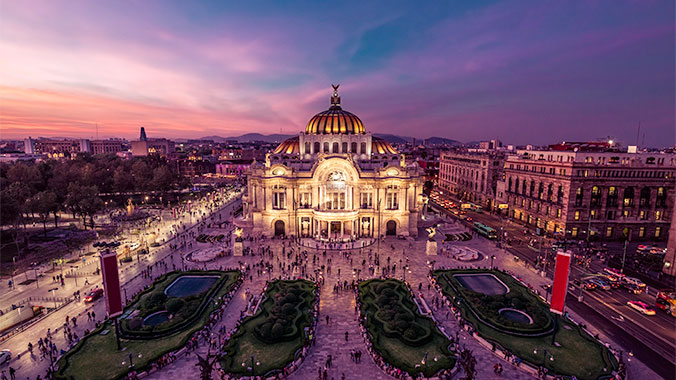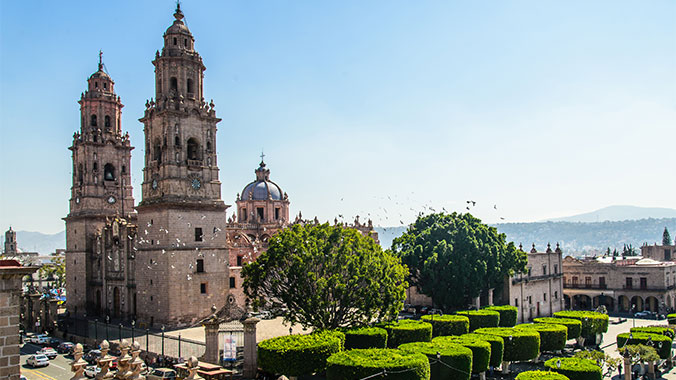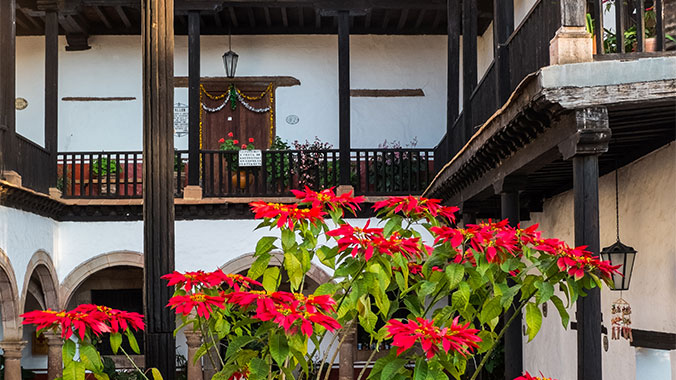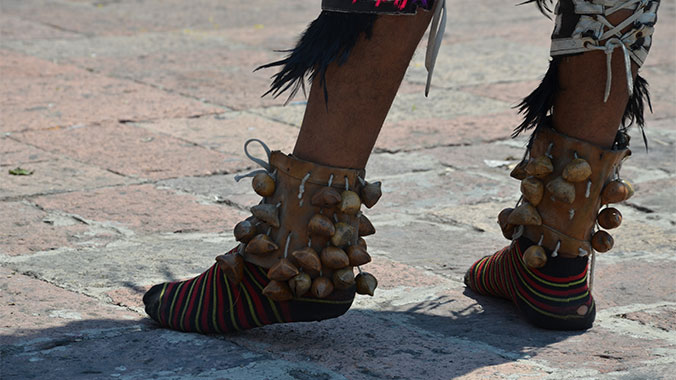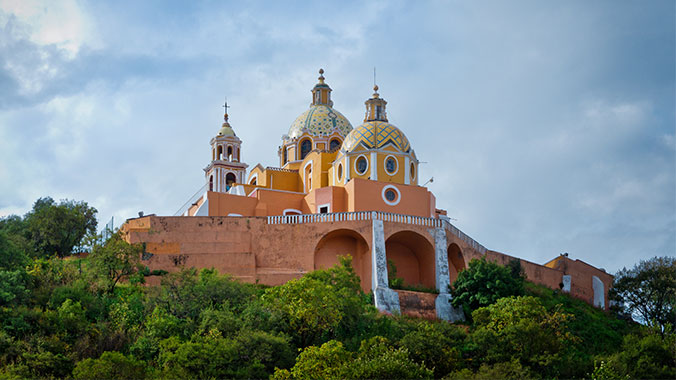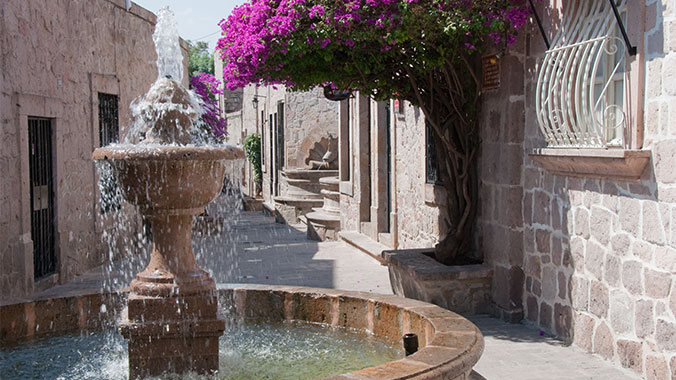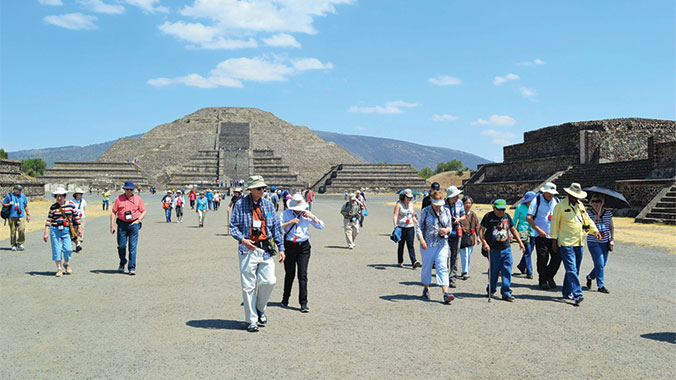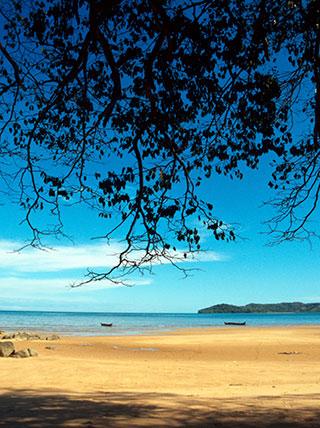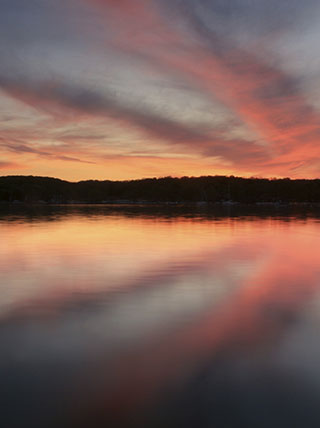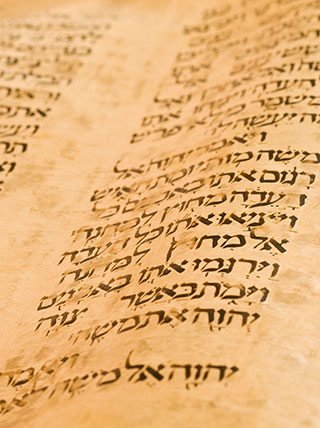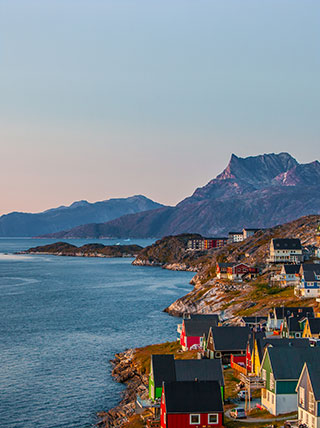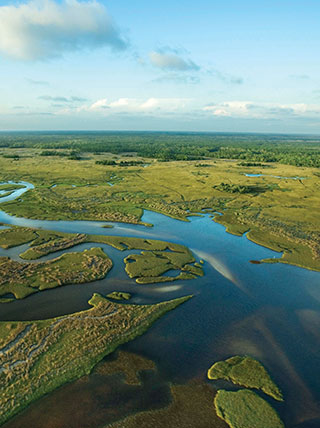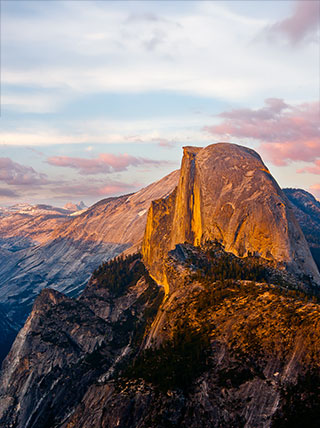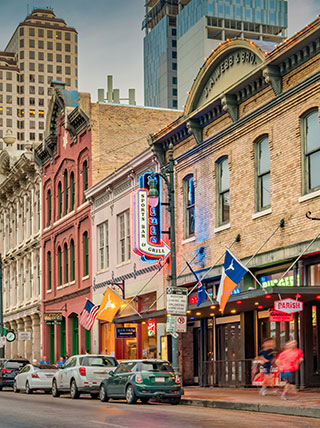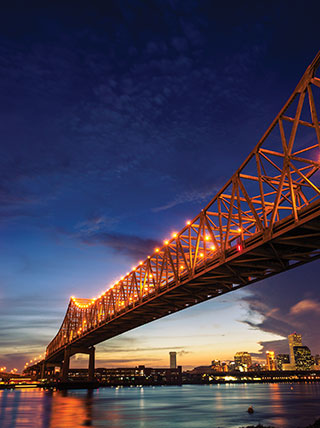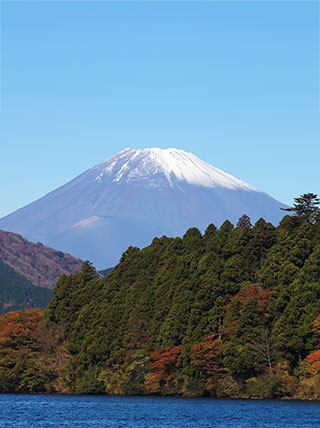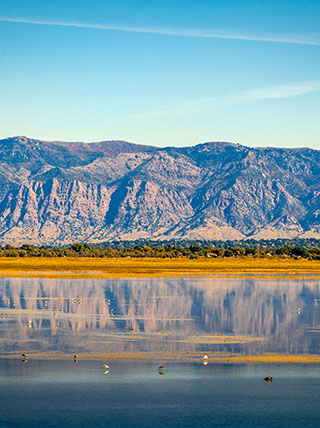Mexico
The Best of Central Mexico: Magical Towns and Bustling Cities
Program No. 23083RJ
Beginning in Mexico City’s bustle, journey to five colorful, European-inspired cities in Central Mexico, experiencing archaeological gems, open-air markets and savory cuisine.
Enroll with Confidence
We want your Road Scholar learning adventure to be something to look forward to—not worry about. Learn more
Protecting the Environment
We offset a portion of the emissions created by your travel. Learn more
Itinerary
While we make every effort to ensure the accuracy of our published materials, programs are typically advertised more than a year prior to their start date.
Read More.
While we make every effort to ensure the accuracy of our published materials, programs are typically advertised more than a year prior to their start date. As a result, some program activities, schedules, accommodations, personnel, and other logistics occasionally change due to local conditions or circumstances. Should a major change occur, we will make every effort to alert you. For less significant changes, we will update you during orientation. Thank you for your understanding.
Duration
15 days
14 nights
What's Included
35 meals (
14B, 12L, 9D
)
20 expert-led lectures
26 expert-led field trips
4 hands-on experiences
1 performance
An experienced Group Leader
14 nights of accommodations
Taxes and customary gratuity
Road Scholar Assurance Plan
Day
1
In Transit to Program, Orientation, Welcome Dinner
Location:
Mexico City
Meals:
D
Stay:
Zocalo Central Hotel
Activity Note
Hotel check-in from 3:00 p.m. Remember to bring your nametag (sent previously).
Afternoon:
After checking in to the hotel and confirming the meeting room with the front desk, take some time to freshen up and relax. 6:00 p.m. Gather in the hotel lobby to register with the program staff and walk a short distance to a local restaurant. Settle in a private room for orientation and the welcome dinner. The Group Leader will greet everyone and lead introductions. We will receive a welcome packet containing the up-to-date schedule that reflects any changes, and other important information. We will then discuss roles and responsibilities, logistics, safety guidelines, emergency procedures, and answer questions. Our knowledgeable Group Leader will also serve as our Study Leader on field trips and other group activities, presenting important aspects of Mexican history, culture, traditions, and economy during transfers. Transportation will be via private motorcoach unless noted otherwise. Periods in the daily schedule designated as “Free time” and “At leisure” offer opportunities to do what you like and make your experience even more meaningful and memorable according to your personal preferences. The Group Leader will be happy to offer suggestions. For meals designated on your own, you may join the Group Leader at a designated restaurant, if desired. Program activities, schedules, personnel, and indicated distances or times may change due to local circumstances/conditions. In the event of changes, we will alert you as quickly as possible. Thank you for your understanding. If you arrive late, please ask for your packet and instructions from the Group Leader at the hotel front desk when you check in.
Dinner:
In a local restaurant
Evening:
Return to the hotel, settle in, and get a good night’s rest for the day ahead.
Day
2
Chapultepec Park, Anthropology Museum, Bellas Artes
Location:
Mexico City
Meals:
B,L,D
Stay:
Zocalo Central Hotel
Activity Note
Getting on/off a motorcoach, city driving. Walking up to 1.5 miles during the day on city sidewalks and museums generally flat. Standing 1 to 2 hours per museum visit. Climbing one flight of stairs.
Breakfast:
On the scenic terrace of the hotel.
Morning:
As the ancient center of the Aztec Empire and the first and most important of Spanish colonial marvels in the New World, Mexico City offers culture and history in a vibrant atmosphere. We will begin to explore this fascinating city. We will board our motorcoach and ride along majestic Reforma Boulevard where every roundabout exhibits a monument, to reach the more visited section of Chapultepec Park. The origin of Chapultepec Park, one of the largest and most beautiful urban parks in the world, dates to the Aztecs who planted the first Ahuehuete trees — a few of which are still alive today — near a spring and built an aqueduct that was later destroyed by the Spanish. In addition to its wonderful variety of green spaces, the park contains nine museums, a zoo, an amusement park, lakes, and more. Chapultepec is an important social and cultural destination for local people as well as visitors. Among the many attractions, the park houses the world-famous Anthropology Museum in which we will have an expert-led exploration.
Lunch:
At the museum restaurant
Afternoon:
Brief time on your own to enjoy the lively park, perhaps catch indigenous groups performing on the plaza. On the return drive, we will get off the motorcoach at Alameda Park and continue by foot to further explore Mexico City’s historical center. Our first stop is at the imposing Art Nouveau Palacio de Bellas Artes, the Palace of Fine Arts, where we will stop to admire the emblematic building. Murals by famous artists are exhibited inside the building. As we admire them, the Group Leader will delve on the importance of muralism in Mexico. We will continue the walk to Correo Mayor, an eclectic palace that served as the Post Office, and stroll along a book seller alley and a pedestrian street lined by impressive colonial and neoclassical buildings until we reach the hotel. Time to freshen up before departing for dinner at a restaurant by the hotel.
Dinner:
In a local restaurant.
Evening:
At leisure.
Day
3
Xochimilco Floating Gardens, Coyoacan, Frida Kahlo, Zocalo
Location:
Mexico City
Meals:
B,L
Stay:
Zocalo Central Hotel
Activity Note
Getting on/off a motorcoach, city driving. Stepping into a flatboat from a cement platform. Walking up to 2.5 miles during the day on city sidewalks, generally flat and uneven. Standing up to 1 hour in museum. Climbing one flight of stairs.
Breakfast:
At the hotel.
Morning:
We will board the motorcoach and ride to Xochimilco. The Aztec city of Tenochtitlan was located on a lake in which the Mexicas, as the Aztecs called themselves, traveled by canoes and cultivated the land using chinampas, wooden trellises set on the water. Today, a small portion of the lake and of the agricultural system still remains in Xochimilco, where colorful “trajineras” — small boats decorated with flowers — travel in the canals through the “floating gardens”. Boats with food, flower vendors and mariachis ride alongside the visitors adding to the folkloric event. We will hop aboard a “trajinera” and join in the fun while gaining a deeper understanding of the complex Aztec city. Together with Mexico City itself, Xochimilco is part of the designated UNESCO World Heritage Site. From the UNESCO inscription, “With its network of canals and artificial islands, it testifies to the efforts of the Aztec people to build a habitat in the midst of an unfavorable environment. Its characteristic urban and rural structures, built since the 16th century and during the colonial period have been preserved in an exceptional manner.” We will then drive on to Coyoacan, a beautiful, quaint colonial neighborhood of narrow streets, small plazas, lively markets, restaurants and cafes. Experience a traditional Mexican taco lunch at a “taqueria”, roll your taco, choose your trimmings and salsas.
Lunch:
At a local restaurant
Afternoon:
A popular ice cream shop is across the plaza. Corn, avocado, and jalapeños are some of Mexico’s exotic flavors along with the traditional ones, choose your favorite for dessert. Time on your own to stroll in the plazas or enter a craft market. Before departing Coyoacan, we will regather to visit Casa Azul, home of the famous artist Frida Kahlo, now a museum of her life and works. Return to the city center to get to know the zocalo. Led by the Group Leader, we will enter the Metropolitan Cathedral, constructed with stones from the destroyed Aztec city of Tenochtitlan. We will view from atop the recently excavated Templo Mayor archeological site where the base of Tenochtitlan’s main pyramid has been unearthed. We will also learn the importance of the imposing National Palace, currently the home of Mexico’s President. Since the days of the Aztecs, the plaza has been and still is the site of political, religious, and social events. It is always busy and lively. The remainder of the afternoon and the evening are free, enjoy what you like.
Dinner:
On your own
Evening:
At leisure. Prepare for check-out and transfer in the morning.
Day
4
Transfer to Morelia, City Field Trip
Location:
Morelia
Meals:
B,L
Stay:
Hotel Alameda Centro Historico
Activity Note
Getting on/off a motorcoach. Driving 190 miles, approximately 4 hours. Walking up to 1 mile throughout the day on city sidewalks and cobblestone streets, generally flat and uneven. Standing up to 1 hour at a time during field trips. Climbing one flight of stairs.
Breakfast:
At the hotel.
Morning:
We will check out of the hotel and leave Mexico City behind with a view of ultra-modern skyscrapers in the Santa Fe neighborhood. As we cross forested mountains, we look for the snow-covered tips of volcanos that form the Trans-Mexican Volcano Belt. During the ride, our Group Leader will present the fascinating history of the state of Michoacan, its indigenous Purepecha population, and the origin of its fine crafts. We expect to arrive late in the morning in Morelia. Capital of the state of Michoacan, Morelia is known as the aristocrat of colonial cities. The historic center is a designated UNESCO World Heritage Site. Characterized by outstanding urban planning, its wide avenues are lined with more than 200 majestic palaces, a prominent Cathedral, and stately plazas. Most of these were constructed with pinkish quarry stones, contributing to a formal, unified appearance. We will check in to our centrally located hotel, then walk to a nearby restaurant for lunch.
Lunch:
In a local restaurant
Afternoon:
With our Group Leader, we will begin to explore the city during a walking field trip. As we stroll along stately avenues, we will be able to admire the beauty of each palace, its architecture and decoration. We will admire the facade of the majestic Cathedral and the Government Palace. As we walk amid fountains, parks, and plazas, we will see one of the homes of José Maria Morelos, a hero of the War of Independence, who gave Morelia its name. Returning to the hotel, the remainder of the afternoon and evening are free.
Dinner:
On your own
Evening:
At leisure. You might like to stroll in the main plaza to see the cathedral beautifully illuminated and mingle with local people at cafés under the arches.
Day
5
Purépecha Villages & Towns
Location:
Morelia
Meals:
B,L,D
Stay:
Hotel Alameda Centro Historico
Activity Note
Getting on/off a motorcoach. Driving 90 miles, approximately 2 hours. Walking up to 3 miles during the day on city sidewalks and cobblestone streets, generally flat and uneven with uphills. Standing up to 1 hour at a time during field trips. Climbing one flight of stairs.
Breakfast:
At the hotel.
Morning:
The state of Michoacan — often called the “Soul of Mexico” — is home to the indigenous Purepecha people. In pre-Hispanic times, they had developed a realm powerful enough to resist Aztec domination. The Spanish called them Tarascans. After the Spanish conquest of the Aztecs, the Tarascan kingdom eventually fell. Today their population of more than 100,000 still cling to ancient traditions and contribute greatly to the richness of Michoacan’s crafts, considered some of the finest in Mexico. We will board our motorcoach and head out to villages around Lake Patzcuaro. As we ride, our Group Leader will delve more about Mexican culture and traditions. Our first stop is Capula, home of the famed Catrina dolls, the colorful elegantly dressed skeleton symbol for the Day of the Dead celebration. We will visit a workshop to awe at the endless variety of interpretations. Time stood still in the small picturesque Purepecha village of Santa Fe de la Laguna. We will see these reserved people trading their goods in the simple market of the town plaza, fish still jumping, then we will enter the home of a potter who revived ancient pottery making techniques and have blue corn tortillas right off the grill in a traditional kitchen. Continue to Patzcuaro. Founded in the 1320s by the Purepecha, the small quaint town of Patzcuaro is a colonial gem of simple tile-roofed adobe homes painted in red and white, ancient churches and somber convents that reveal its indigenous-colonial-Mestizo roots.
Lunch:
At a local restaurant.
Afternoon:
Purepechas proudly relish their traditions, including music and dancing. In the restaurant patio, we will delight on a private brief presentation of their most noted dances and songs performed by an indigenous folkloric group. Our Group Leader will then take us on a walking field trip through plazas, up and down cobblestone streets, including the House of 11 Patios. Free time to explore on your own, sit at a cafe or you may join the Group Leader to see a mural painted by Juan O’ Gorman. Returning to the hotel in Morelia, we will have some time to freshen up and relax before dinner in a restaurant under the arches facing the Cathedral, a favorite among locals.
Dinner:
At a local restaurant.
Evening:
At leisure. Tonight or any night when appropriate, enjoy the “sobremesa” — lingering at the table to chat after dinner — as is customary in Mexico. Prepare for check-out and transfer tomorrow.
Day
6
More Morelia, Transfer to Guanajuato, El Pipila Viewpoint
Location:
Guanajuato
Meals:
B,L,D
Stay:
Edelmira Hotel Boutique
Activity Note
Getting on/off a motorcoach and in/out of Sprinters. Driving 120 miles, approximately 3 hours. Walking up to 3 miles during the day on city sidewalks and cobblestone streets, generally flat and uneven with steps. Slow walking and standing up to 1 hour during field trips. Climbing one flight of stairs.
Breakfast:
At the hotel.
Morning:
We will continue to explore Morelia by bus and on foot with our Group Leader. The city boasts a magnificent aqueduct, one of the best preserved in the world. Built with the pinkish quarry stone, the 1 mile aqueduct is supported by 253 arches. Near the end of the aqueduct, we will have a moment of free time. You may admire the aqueduct close up and, if desired, view the brightly decorated Santuario de Guadalupe, unforgettable with its brilliantly colored and decorated interior. The Virgin of Guadalupe is an integral part of Mexican identity, as our Group Leader will discuss. We will then stroll to the small Calle del Romance (a romantic alley) and to the Fuente de las Tarascas, an emblematic Morelia fountain. Hop back on the bus for the brief return ride to the main plaza. We will then have some time for independent exploration or simply to relax before checking out of the hotel and regroup for lunch.
Lunch:
In a local restaurant.
Afternoon:
Next, we will ride to the queen city of Mexican colonial jewels, Guanajuato, a UNESCO World Heritage Site. Our Group Leader will lecture on the importance of mining in Mexico as we ride. In the 18th Century, the discovery of some of the richest silver finds in history promoted the construction of this magnificent city. Nestled in the mountains, Guanajuato is notable for its charm as well as its very narrow, winding, often steep streets (callejones), stairways, small plazas (plazuelas), subterranean streets, and colorful buildings. Buses cannot enter the narrow streets; thus we will transfer into private vans. As we drive along the panoramic road, we stop at El Pipila Statue for the finest viewpoint in Guanajuato. There, the city lies in front of us on a steep hillside, colorful and imposing as if it were a painting. Then we take a funicular to reach the hotel located in a quiet niche in a pedestrian zone of the Jardín Union, the main plaza. After checking in, we will have time to freshen up and relax before dinner. You might also like to find a bench and take in the surroundings of the tree-shaded plaza sided by the elaborate façade of Teatro Juarez. We gather again for dinner on the plaza.
Dinner:
In a local restaurant.
Evening:
You may want to explore Guanajuato’s serpentine streets by night on your own or stay in the plaza where music and merriment is always present.
Day
7
Guanajuato Highlights, Free Time
Location:
Guanajuato
Meals:
B,D
Stay:
Edelmira Hotel Boutique
Activity Note
Walking up to 3 miles during the day on generally narrow sidewalks, uneven cobblestones, many up-hills, many steps. Standing up to 1 hour at a time during field trips. Climbing one flight of stairs. Teatro Juarez opens to the public on a day-to-day basis, visits cannot be guaranteed.
Breakfast:
At the hotel.
Morning:
We will set out with our Group Leader on a walking field trip to explore some of the city’s highlights. Bright, colorful homes and buildings line the streets, alleys, and plazas. The alleys can become so narrow that a popular legend tells of a couple kissing from their balconies. We will stop to admire the imposing white stone building of Guanajuato University fronted by a wide staircase with 133 steps — viewed from the bottom! The striking, deep yellow Guanajuato Basilica is one of the city’s most renowned architectural, historical, and ecclesiastical landmarks. Situated on a hilltop facing a larger plaza, it is prominent in the daytime and brightly lit at night. Construction began in 1671, sponsored by local silver miners, and was completed in 25 years. The main object of veneration inside is a jewel-laden image of Our Lady of Guanajuato. The story goes that this wooden statue of the Virgin and Child was carved by an unknown artist in Andalusia prior to the Moorish invasion of Spain and was then guarded in a cave to hide it from the Moors — where it stayed for eight centuries! Eventually, the King of Spain gave it to the basilica as a token of thanks for all the wealth dug out of the silver mines and sent to the Spanish treasury. We will also trace the city’s turbulent history at the Alhóndiga de Granaditas, a former granary that now contains a regional museum. In 1810, it was the site of the first battle in the Mexican War of Independence.
Lunch:
On your own
Afternoon:
Free time. Take this opportunity for personal independent exploration to see and do what interests you most. Please refer to the list of Free Time Opportunities. The Group Leader will be happy to offer suggestions. You might like to wander through the maze of alleys, plazas, and markets, or find a café to sip a beverage and observe the vibrant city life. Other possibilities include the home and museum of world famous artist Diego Rivera, the adjacent Modern Art Museum, and a museum dedicated to Cervantes. In the late afternoon, gather at the stately entrance of Teatro Juarez, with its magnificent, neo-classical exterior that faces the central plaza. If permitted, we will enter the theater with our Group Leader to appreciate its richly ornate, flamboyant decoration that follows the horseshoe design of most European opera houses. For dinner, take a break from Mexican specialties to delight on Italian cuisine in a first floor restaurant that overlooks the plaza.
Dinner:
In a local restaurant.
Evening:
One of Guanajuato’s most popular traditions is the “callejoneada” in which groups of musicians in period dress sing, dance, and retell local legends (in Spanish) as they weave through old cobbled streets, steep alleys, and plazas. Elective: Those with energy, stamina, and enthusiasm are welcome to follow the callejoneada. Prepare for check-out and transfer in the morning.
Day
8
San Miguel Allende, Queretaro
Location:
Queretaro
Meals:
B,L,D
Stay:
Hotel Boutique Casa Loreta
Activity Note
Getting in/out of Sprinters and on/off a motorcoach. Driving 90 miles, approximately 2.5 hours. Walking up to 2 miles during the day on narrow sidewalks, uneven cobblestones with up-hills and steps. Standing up to 1 hour at a time during field trips.
Breakfast:
At the hotel.
Morning:
Due to the narrow streets, we will take private Sprinters to reach our motorcoach. Picturesque back sides of homes are visible through the openings of the underground tunnels and narrow passageways. On our motorcoach, we continue our journey to Queretaro stopping in San Miguel Allende on the way. The drive crosses the region known as the Cradle of National Independence. On September 16, 1810, Father Hidalgo, a priest who became “the Father of Mexico”, gave the famous cry for freedom, now called the “Grito de Dolores”, in a Dolores Hidalgo church. He then marched to a Sanctuary outside of San Miguel Allende where he took the banner depicting the Virgin of Guadalupe as a symbol of the nascent insurgent army. These two emblematic events sparked the beginning of the War of Independence from Spain. September 16 is celebrated as Mexico’s Independence Day. During the drive, the Group Leader will discuss the war and the economic, social, and religious structure of the Spanish colonial period leading to it. Named in honor of General Ignacio Allende, one of the fathers of Mexican Independence who was born here, San Miguel Allende gained international fame thanks to the establishment of Instituto Allende in the 1950s attracting foreigners to its art and Spanish courses. We will take a walking field trip with our Group Leader to see the town center and appreciate the variety of architectural styles represented in its buildings, especially La Parroquia de San Miguel Arcángel — the Parish of Saint Michael the Archangel — that can be seen from everywhere. Founded in the mid-1500s, it was rebuilt several times over the centuries. Though ancient in appearance, the soaring towers and neo-Gothic façade we see today are from the late 19th century.
Lunch:
In a local restaurant.
Afternoon:
Free time to explore on your own. We’ll then move on to Querétaro. During the drive, our Group Leader will narrate the eventful years following the independence discussing Benito Juarez, the French Invasion, the Revolutionary War, and the eventual signing of Mexico’s Constitution. Santiago de Querétaro is a designated UNESCO World Heritage Site. From the UNESCO inscription: “The old colonial town of Querétaro is unusual in having retained the geometric street plan of the Spanish conquerors side by side with the twisting alleys of the Indian quarters. The Otomi, the Tarasco, the Chichimeca and the Spanish lived together peacefully in the town, which is notable for the many ornate civil and religious Baroque monuments from its golden age in the 17th and 18th centuries.” We will check in to our hotel, then walk to a lively Mexican restaurant for dinner.
Dinner:
In a local restaurant.
Evening:
At leisure. You are welcome to walk back to the hotel with our Group Leader or stay in the plaza to enjoy the nightlife, mingle with local people, and return to the hotel on your own.
Day
9
Exploring Querétaro, Aqueduct
Location:
Queretaro
Meals:
B,L
Stay:
Hotel Boutique Casa Loreta
Activity Note
Walking up to 3 miles throughout the day on cobblestones, generally flat and uneven. Slow walking and standing up to 1 hour during field trips. Climbing one flight of stairs.
Breakfast:
In a local restaurant
Morning:
Away from the flow of tourism, Santiago de Querétaro’s dynamic historical center pleasantly surprises the visitor. A monumental aqueduct, a symbol of the city, boasts 75 arches reaching a height of nearly 100 feet. We will explore the city on a walking field trip with our Group Leader through the most notable elements of the historical center featuring Baroque and neo-classical architecture. We will learn how Querétaro has played a significant role throughout Mexican history from its founding in 1531 to the plotting of the Independence, the execution of Maximilian of Austria, the writing of the Mexican constitution, and the signing of the Treaty of Guadalupe. An expert-led visit of a 16th century Franciscan monastery immerses us into the life of the monks and the many events which took place in this historical site. Maximilian prison cell and a Quarry Cross related to an Otomi legend are in the monastery. As we walk along charming streets and lively plazas, we’ll enter the courtyard of the Government Palace. Once known as the Casa de la Corregidora, it was the home of Josefa Ortíz de Dominguez, a heroine of the Mexican independence movement, declared a Benemérita del Estado. We will also enter Queretaro’s Art Museum located in the former monastery of San Augustin founded in 1728, to appreciate the ornate courtyard, considered one of the most magnificent in Latin America. On our way to lunch, we admire the facade of the sumptuously decorated Baroque mansion of Casa de la Marquesa.
Lunch:
In a local restaurant.
Afternoon:
Elective: The Otomi Indigenous people of Queretaro are responsible for the creation of Lele dolls, the colorful rag dolls with ribbon-decked hair considered a cultural heritage. You may join the Group Leader to a local Otomi Indian craft center where the women will guide you through the steps of making your own rag doll. This relaxing fun activity offers the opportunity to interact with and get to know the lifestyle of these indigenous people who come to the city from remote villages in the surrounding mountains. The remainder of the afternoon and evening are free to rest and relax or explore independently. The Group Leader will be happy to offer suggestions. You may choose to join the Group Leader on a walking excursion to Santa Rosa de Viterbo Church to admire the stunning unique exterior and the contrasting Baroque Neo-classical interior.
Dinner:
On your own
Evening:
At leisure. Prepare for check-out and early transfer in the morning.
Day
10
Transfer to Puebla, Teotihuacan Complex
Location:
Puebla
Meals:
B,L,D
Stay:
Quinta Real Puebla
Activity Note
Getting on/off a motorcoach. Driving 230 miles, approximately 5 hours. Walking up to 3 miles during the day on gravel paths, and cobblestones, generally flat and uneven and climbing high uneven stone steps.
Breakfast:
In a local restaurant
Morning:
Today is an early departure. We will check out of the hotel and board our motorcoach for the transfer to Puebla with a visit to Teotihuacan en route. Our drive will cross agricultural fields nicely divided by stone walls and rolling hills that encircle Mexico City. As we ride, our Group Leader will lecture on pre-Columbian cultures. Teotihuacan is one of Mexico’s most noted archeological remains, a designated UNESCO World Heritage Site. Known as the City of the Gods, Teotihuacan was the home of an important culture that influenced succeeding Mesoamerican civilizations and a population greater than Rome from the 1st century BCE to the 5th century CE. From the UNESCO inscription: “The holy city of Teotihuacan ('the place where the gods were created') is situated some 50 km north-east of Mexico City. Built between the 1st and 7th centuries A.D., it is characterized by the vast size of its monuments — in particular, the Temple of Quetzalcoatl and the Pyramids of the Sun and the Moon, laid out on geometric and symbolic principles. As one of the most powerful cultural centers in Mesoamerica, Teotihuacan extended its cultural and artistic influence throughout the region, and even beyond.” With our Group Leader, we will explore the site, walk along the Avenue of the Dead, enter some of its palaces, and admire from below the famous Temple to the Sun, approximately 200 feet high and the slightly smaller Temple to the Moon.
Lunch:
At a restaurant by the archeological site.
Afternoon:
Continuing our journey, the Group Leader will lecture on Mexico’s renowned cuisine as well as completing the chronicle of Mexican history to conclude with present day Mexico. We arrive in Puebla, Mexico’s fourth-largest city, important for its rich history, culture, and economy. Our first stop is at the monumental fountain of the fort area where the Battle of Puebla was fought on Cinco de Mayo: May 5, 1862. The outnumbered Mexicans, led by General Zaragoza, outfought the superior French force, providing a moral victory in the larger war against foreign intervention. We will check in to our hotel, a former 16th century convent and have some time to freshen up. Puebla — originally Ciudad de los Angeles, City of the Angels — was designated a UNESCO World Heritage Site for its wealth of historical and cultural riches, especially architecture. Its gems of Spanish-colonial buildings include over 360 churches, palaces, a historic library, and private houses, many of which are decorated with colorful ‘azulejos’ — Talavera-style ceramic tiles. With our Group Leader, we will set out for the imposing zocalo and view the façade of the monumental cathedral. Begun in 1575 and completed in 1649, it is the second largest in Mexico; its twin bell towers are the tallest in the country. Time on your own to enjoy life on the Zocalo, then gather again for dinner at a rooftop restaurant facing the cathedral which is magnificently lit at night.
Dinner:
In a local restaurant
Evening:
At leisure.
Day
11
Exploring Puebla
Location:
Puebla
Meals:
B,L
Stay:
Quinta Real Puebla
Activity Note
Getting on/off a motorcoach. Walking up to 3 miles throughout the day on cobblestone sidewalks generally flat some uneven. Slow walking and standing up to 1.5 hour during field trips. Climbing one flight of stairs.
Breakfast:
At the hotel.
Morning:
We’ll step on the motorcoach to encounter highlights away from the city center. On the way to San Andrés Cholula, sight the facade of San Francisco Acatepec covered in colorful shiny tiles. The beautiful church of Tonantzintla, on the other hand, is noted for its exceptional interior where nearly every inch of plaster molding is decorated in an “indigenous baroque” style with colored images of flowers and fruits, human and animal faces and figures with indigenous headdresses, as well as abstract designs reflecting the mix of pre-hispanic and Christian worlds. We continue to visit the Museo Internacional del Barroco, inaugurated in 2016. The sleek, avant-garde exterior design contrasts dramatically with the Baroque art inside. In an exploration of the museum amid paintings and interactive displays, we will gain an in-depth knowledge of the many aspects of Baroque and the important role played by Mexico in general and Puebla specifically for its development. Return to the city center. We will have a traditional Puebla meal for lunch consisting of mole (pronounced “MOH-leh”). The poblano mole originated in Puebla. This rich, smooth sauce — often served over chicken, turkey, or other meats — is highly labor intensive, prepared with ground chiles and other ingredients such as chicken stock, tortillas, nuts, seeds, spices, garlic, onion, and tomatoes, as well as chocolate, plantains, and raisins for sweetness, and sometimes more.
Lunch:
In a local restaurant
Afternoon:
After lunch, with our Group Leader we will visit Biblioteca Palafoxiana, listed in UNESCO’s “Memory of the World” register. Founded in 1646, it was the first public library in the Americas. The remainder of the afternoon is free to explore on your own. The Group Leader will be happy to offer suggestions. If desired, you may join the Group Leader on a walking visit of the Church of Santo Domingo to appreciate the baroque ornamentation of the Capilla del Rosario, located inside the church, lavishly covered with gold leaf.
Dinner:
On your own
Evening:
At leisure. Prepare for check-out and transfer in the morning.
Day
12
Transfer to Oaxaca, Exploring the City
Location:
Oaxaca
Meals:
B,L,D
Stay:
Holiday Inn Express Oaxaca-Centro Historico
Activity Note
Getting on/off a motorcoach. Driving 210 miles, approximately 4.5 hours. Walking up to 2 miles during the day on cobblestones, generally flat and uneven. Slow walking and standing up to 1.5 hours during field trip. Climbing one flight of stairs.
Breakfast:
At the hotel.
Morning:
After checking out of the hotel, we will board the motorcoach for Oaxaca, the last destination of our journey. We’ll cross a mountainous area with changes in altitudes and ecosystems: pines forests, columnar cacti, forests and dry desert. Volcanoes can be sighted. Our Group Leader will lecture on “magical” cities, and protected areas that preserve Mexico’s rich cultural heritage. We will reach Oaxaca, one of Mexico’s most captivating cities, its Centro Historico is another designated UNESCO World Heritage Site. Oaxaca is the home of complex indigenous cultures, magnificent baroque colonial buildings and churches, delicious mestizo cuisine, excellent crafts, traditional celebrations, bustling markets, archeological sites, and the birthplace of Benito Juarez, a national hero and a beloved president of Mexico. Upon arrival, lunch awaits at a local restaurant.
Lunch:
In a local restaurant
Afternoon:
We will then drive to our centrally located hotel for check-in. After some time to freshen up, we’ll set out with our Group Leader on a walk to get acquainted with Oaxaca. Our first stop is the magnificent Santo Domingo Church and plaza. A pedestrian street connects it to the spacious and lively Zocalo dominated by the baroque Metropolitan Cathedral. Next, we enter the famed market. Among the many local specialties sold in the market, heaps of fried grasshoppers create a memorable sight! Stop at a chocolate factory to see the process of making Mexican chocolate. Return to the Zocalo where folkloric music groups encourage locals to dance to their favorite rhythm. Dinner is in a restaurant facing the zocalo.
Dinner:
In a local restaurant.
Evening:
At leisure. You may remain in the plaza and mingle with local people, enjoy the music or return to the hotel.
Day
13
Monte Alban, Santo Domingo Cultural Center, Alebrijes
Location:
Oaxaca
Meals:
B,L
Stay:
Holiday Inn Express Oaxaca-Centro Historico
Activity Note
Getting on/off a motorcoach, city driving. Walking up to 3 miles during the day on cobblestones, generally flat and uneven and on gravel paths and climbing some high stone steps. Slow walking and standing up to 2 hours during field trips. Climbing one flight of stairs.
Breakfast:
At the hotel.
Morning:
We will board our motorcoach for a field trip with our Group Leader to Monte Alban, the social-political-economic center of the Zapotec civilization from 500 BCE to 800 CE, one of the earliest and most important of Mesoamerica. Situated on a mountain top with grand vistas of the Oaxaca Valley, this vast archeological site, part of the UNESCO World Heritage listing with Oaxaca, is impressive. Among the many objects discovered during excavations are elaborate, splendidly made pieces of gold jewelry and other fine objects found in famed Tomb #7. In addition, of particular interest in Monte Alban are “Los Danzantes” — the dancers — a series of more than 300 rock carvings depicting figures in playful positions. Visit the museum and enjoy the view from the terrace of the on-site restaurant.
Lunch:
At an on-site restaurant in Monte Alban
Afternoon:
We will then return to Oaxaca to enter Santo Domingo Cultural Center. The monastery, founded by the Dominicans in the 16th Century, is currently a museum where the jewels of Tomb #7 of Monte Alban, considered one of the most important findings in Mesoamerica, are exhibited. An entertaining hands-on activity follows. Enter a gallery where alebrijes are exhibited to appreciate these unique Oaxacan traditional art pieces. Enjoy a display of finely crafted Alebrijes, appreciate its craftmanship, learn about its origin - brightly painted wood carvings of imaginative figures, often fantastical, that originated in Oaxaca and have become world renowned. Led by a craftsman and assisted by the Group Leader, participate in an alebrijes workshop trying your skills at painting one! The remainder of the day is at leisure for independent exploration. You may wish to enter Santo Domingo Temple, the most ornate of Oaxaca’s churches, stroll through the galleries or visit a museum and choose a restaurant for dinner.
Dinner:
On your own
Evening:
Enjoy Oaxaca at night
Day
14
Santa María del Tule, Teotitlan del Valle, Cooking Class
Location:
Oaxaca
Meals:
B,L,D
Stay:
Holiday Inn Express Oaxaca-Centro Historico
Activity Note
Getting on/off a motorcoach. Driving about 20 miles approximately 1 hour. Walking up to 1.5 miles during the day on cobblestones, generally flat and uneven. Slow walking and standing up to 1 hour during field trips. Climbing one flight of stairs.
Breakfast:
At the hotel.
Morning:
We will board our motorcoach with our Group Leader for an all morning visit of the Oaxaca Valley making several stops. Santa Maria del Tule houses the famed 2,000 years old Moctezuma cypress. With a 46-foot diameter and a 190-foot circumference, it is said to be the widest tree in the world. In Teotitlan del Valle, a small village dedicated to the production of hand-woven rugs, we will see weavers at work. Enter the home and workshop of a family devoted to carding, spinning, and dying the wool with natural dyes that is then woven on frame looms to produce high quality rugs representing pre-Columbian designs, famous paintings, or original patterns. On the return drive to Oaxaca, we will stop for lunch in a country type restaurant featuring Oaxacan specialties.
Lunch:
At a local restaurant.
Afternoon:
Return to the city center for some time on your own to relax before departing for our cooking class - dinner event. A brief walk from our hotel will take us to the kitchen of a local restaurant where we are greeted by the chef. Wearing colorful aprons, we’re ready to work. Mole, salsas, guacamole, tortillas and Oaxacan specialties are part of the gastronomic experience. We’ll have the opportunity to taste Mezcal. While Tequila is technically a kind of mescal, it is produced only from blue agave in five specific regions. On the other hand, Mezcal can be made from a variety of agaves growing in widespread regions. The production process of each beverage is quite different.
Dinner:
At the cooking class. Toast farewell to Mexico and to travel companions, until we meet again
Evening:
Prepare for check-out and departure in the morning.
Day
15
Program Concludes
Location:
Oaxaca
Meals:
B
Activity Note
Hotel check-out 12:00 Noon. See your program travel details regarding transfers. If you are returning home keep passports on hand. Personal travel permits must be returned upon leaving Mexico, the airline will collect them during check-in.
Breakfast:
At the hotel.
Morning:
If you are returning home, safe travels. If you are staying on independently, have a wonderful time. If you are transferring to another Road Scholar program, detailed instructions are included in your Information Packet for that program. We hope you enjoy Road Scholar learning adventures and look forward to having you on rewarding programs in the future. Please join our Facebook page and share photos of your program. Visit us at www.facebook.com/rsadventures. Best wishes for all your journeys!
Please select a day to update the map
Map details are not available for this location.
Please Note:
This program has itinerary variations on certain dates.
Dec 04, 2025 - Dec 18, 2025 (Mexico City to Oaxaca)
Sep 18, 2025 - Oct 02, 2025 (Mexico City to Oaxaca)
Oct 09, 2025 - Oct 23, 2025 (Mexico City to Oaxaca)
Nov 06, 2025 - Nov 20, 2025 (Mexico City to Oaxaca)
Nov 13, 2025 - Nov 27, 2025 (Mexico City to Oaxaca)
Dec 04, 2025 - Dec 18, 2025 (Mexico City to Oaxaca)
Jan 08, 2026 - Jan 22, 2026 (Mexico City to Oaxaca)
Jan 15, 2026 - Jan 29, 2026 (Mexico City to Oaxaca)
Feb 05, 2026 - Feb 19, 2026 (Mexico City to Oaxaca)
Feb 12, 2026 - Feb 26, 2026 (Mexico City to Oaxaca)
Mar 05, 2026 - Mar 19, 2026 (Mexico City to Oaxaca)
Mar 12, 2026 - Mar 26, 2026 (Mexico City to Oaxaca)
Apr 09, 2026 - Apr 23, 2026 (Mexico City to Oaxaca)
Sep 03, 2026 - Sep 17, 2026 (Mexico City to Oaxaca)
Oct 01, 2026 - Oct 15, 2026 (Mexico City to Oaxaca)
Nov 05, 2026 - Nov 19, 2026 (Mexico City to Oaxaca)

